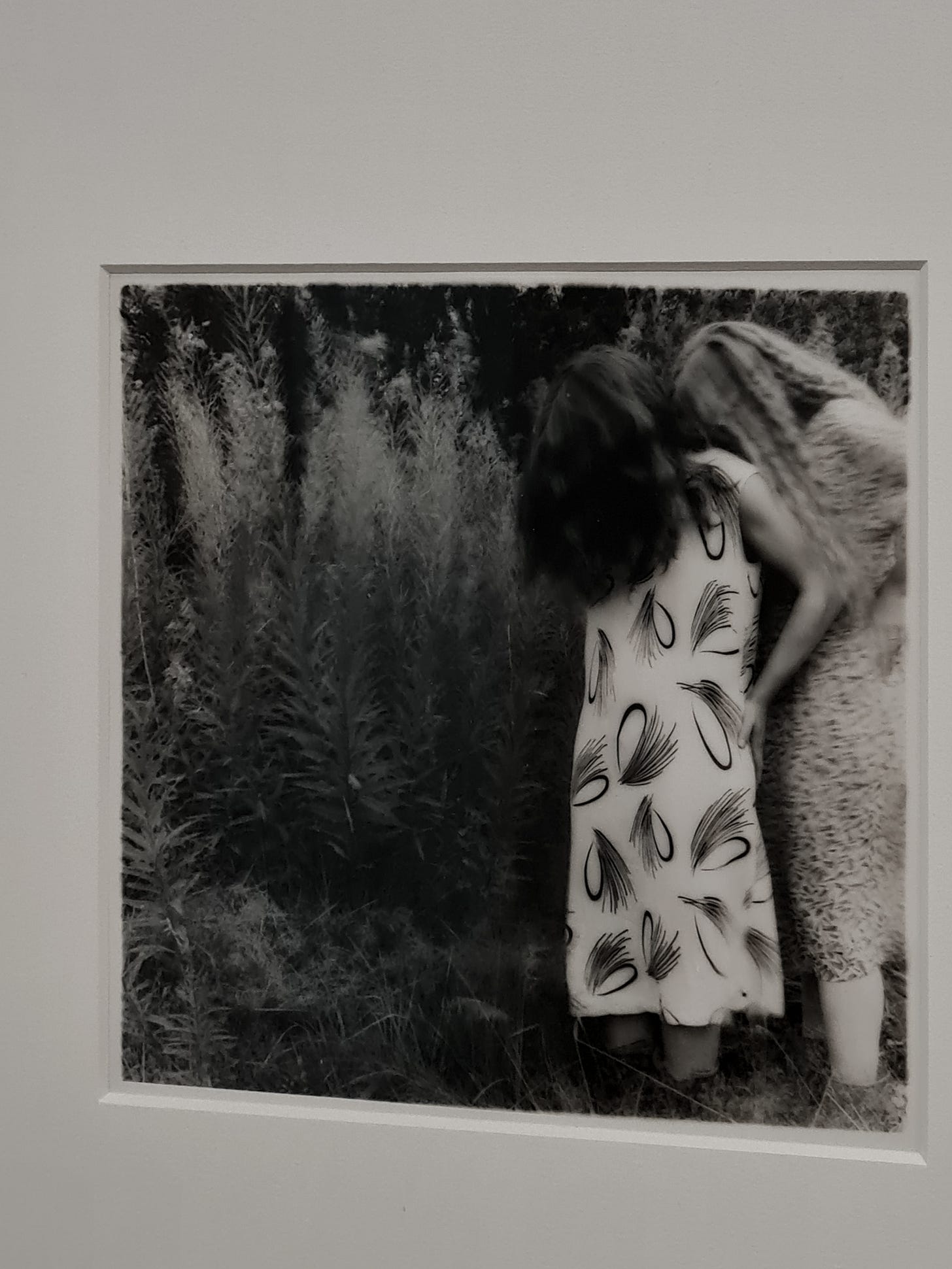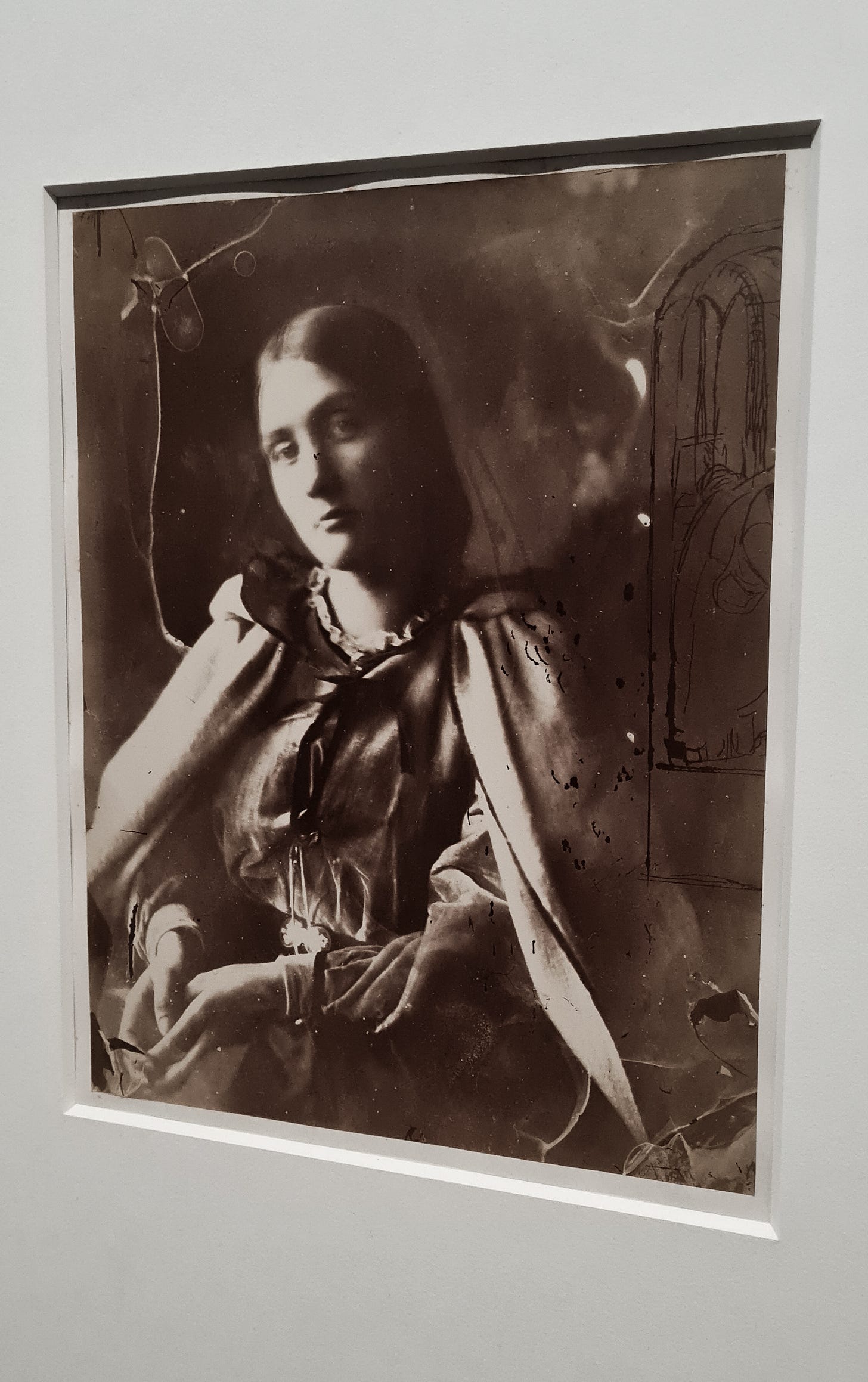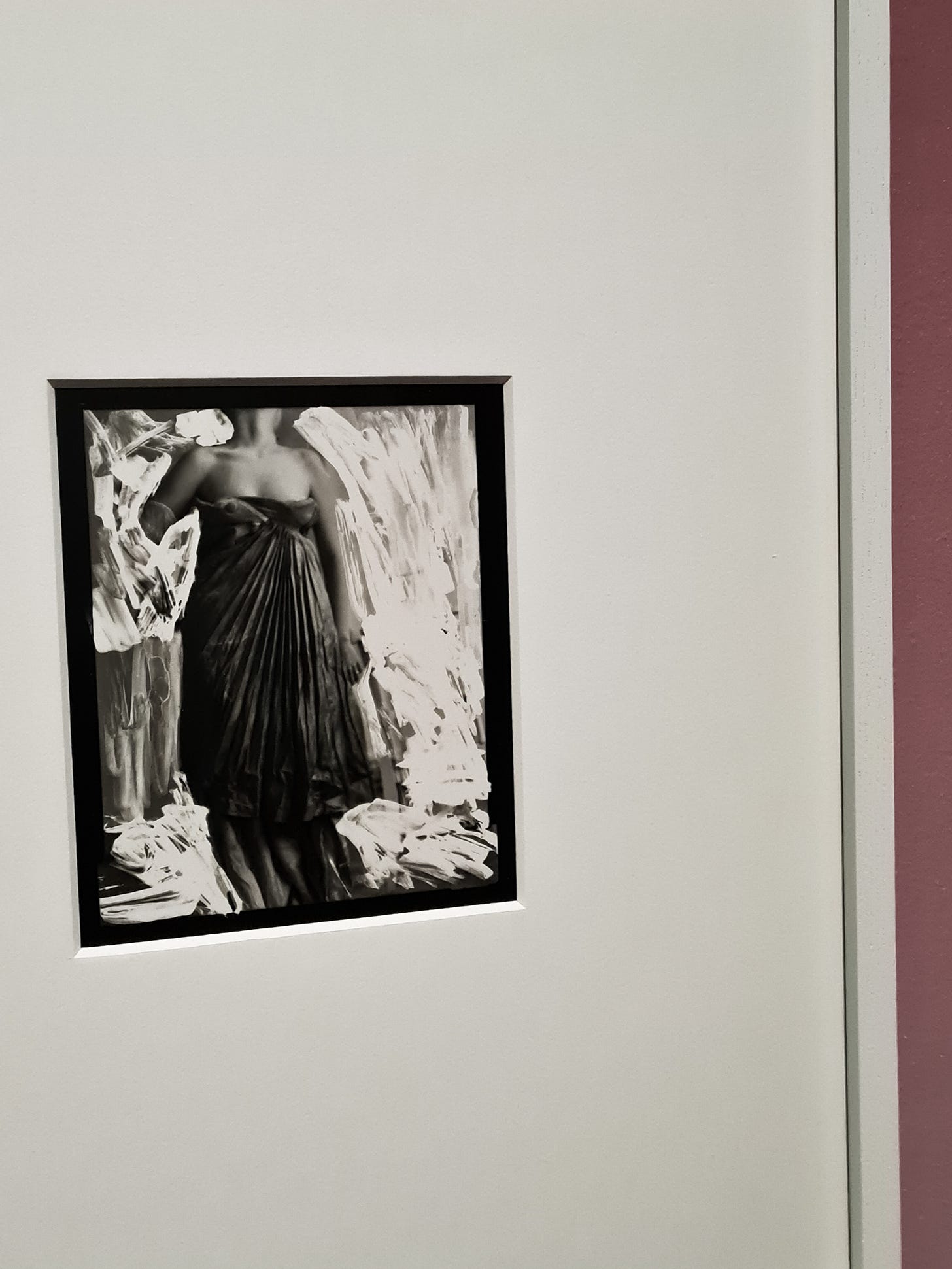Francesca Woodman and Julia Margaret Cameron: Portraits to Dream In
Two fallen angels of photography / Deux anges déchus de la photographie

Recommended song to dress your background with, while you read <<>> Listen to L’INSTANT+ playlist on Spotify*
Suggestion musicale comme toile de fond pour votre lecture <<>> Écoutez la playlist de L’INSTANT+ sur Spotify*
Discovering their works for the first time, I couldn’t help but think to myself: “How modern of them.”
Their disjointed universes met with harmony and simplicity, two monochromatic canvases sharing the same language. Described as “angelic” and “elusive,” I attended a creative feast, roaring bright under an affirmed feminine light. I bathed in beautifully curated sadness and melancholia; both artists’ souls strongly emanated from each frame. I was dreaming awake but felt grounded all the same.
Découvrant leurs oeuvres pour la première fois, je ne pouvais l’ignorer : “Quelle modernité”.
Si différents, leurs univers se rencontraient pourtant avec harmonie, simplement. Deux toiles monochromatiques parlant la même langue. Considérées par certains comme “angéliques”, presque “insaisissables”, j’étais invitée à un festin créatif, m’éblouissant d’une puissante lumière féminine. Baignant dans une tristesse et mélancolie présentées avec minutie, l’âme de ses deux artistes émanait de chaque photographie. Un rêve éveillé que je quittais pourtant si ancrée.

From the age of 48, Cameron intentionally explored out-of-focus photography, inspired to break the rules by finding beauty in scratches, smudges, and other traces. The lighting became dramatic to paint ethereal portraits of friends and family. Her vision materialised technically flawed to most; she saw beyond her time through a shallow depth of field and long shutter speed. Woodman discovered photography at 13 years old. Influenced by surrealism, she staged herself often nude and in empty interiors. A fantasy set aiming to perhaps fix the cracks of a broken soul. She used body language and posture to give meaning.
C’est à partir de l’âge de 48 ans que Cameron commence à explorer le flou d’arrière-plan, inspirée à s’émanciper des règles de la photographie en puisant un sens esthétique dans des éraflures, bavures et autres marques. La lumière devint dramatique pour peindre des portraits fantasmagoriques de sa famille et de ses amis. Sa technique considérée comme imparfaite, elle voyait au-delà de son temps par le biais d’une profondeur de champ et un temps de pose plus long. Woodman découvre la photographie à 13 ans. Le surréalisme la nourrit ; elle se met en scène, souvent nue dans des bâtiments délabrés. Des installations fantastiques qui peut-être auraient guéri les fissures d’une âme blessée. Son corps, sa posture, lui servaient de plume.
I was strongly appealed by Woodman’s work and felt an immense melancholy when diving into her images. She took her own life at the age of 22, a fact I learnt following the exhibition. Cliché or inappropriate to say, this showed throughout her artistic sensibility, painting a longing for something more. I’m probably projecting here, not hurting anyone by doing so nor preaching the right scenario. It’s only a feeling, the ghostly weight of her alienation, her gothic mystification.
Fortement attirée par le travail de Woodman, je ressentis une immense mélancolie en plongeant dans ses images. Elle s’est ôté la vie à 22 ans, un fait que je ne connaissais pas avant de me rendre à l’exposition. Cliché ou inapproprié de partager, cela se ressentait dans sa sensibilité créative, illustrant un désir pour plus. Plus grand. Je projette probablement ici, sans blesser personne ni affirmer aucune vérité. C’est un simple ressenti, le poids fantomatique de son aliénation, de sa mystification gothique.

Woodman imagined a reality that strongly resonated with my cinematic melancholy; Cameron’s blurred imperfections spoke to the grunge kid in me.
La réalité imaginée de Woodman a fortement parlé à ma mélancolie cinématique ; les imperfections floues de Cameron auront bercé l’enfant terrible qui m’habite.
Without knowing, they painted the light of one and the shadow of the other; Francesca Woodman and Julia Margaret Cameron chose photography to make sense of this life, of today’s and yesterday’s. Veiling the malleable flesh with a blur, already several times incarnated, angels and otherworldly beings shaped their creative realms.
Sans le savoir, elles ont peint l’ombre de l’une et la lumière de l’autre ; Francesca Woodman and Julia Margaret Cameron ont choisi la photographie pour faire sens de ce monde, aujourd’hui et celui d’avant. Apposant un voile flouté sur une chair malléable et déjà plusieurs fois incarnée, anges et être surnaturels auront façonné la mythologie de leurs univers oniriques.
Self-exploration, iconography or fantasy, to each her storytelling…
De l’exploration du soi à l’iconographie et l’imaginaire, à chacune son récit…
+
FOR THE CURIOUS AND THE GREEDY
POUR LES CURIEUX.SES
. . .
Aperture, An Unexpected Pairing of Francesca Woodman and Julia Margaret Cameron
The Guardian, Francesca Woodman and Julia Margaret Cameron: Portraits to Dream In review – an intriguing double act
*Wallpaper, Step into Francesca Woodman and Julia Margaret Cameron's dreamy photographs in London
The National Portrait Gallery, Francesca Woodman and Julia Margaret Cameron
Portraits to Dream In
V&A, Julia Margaret Cameron - an introduction
V&A, Julia Margaret Cameron’s working methods
Woodman Family Foundation, Exhibition Spotlight
Woodman Family Foundation, Francesca’s biography
Tate, Finding Francesca
Gagosian, Francesca Woodman
. . .
Edited images by yours truly of the Francesca Woodman and Julia Margaret Cameron
Portraits to Dream In exhibition at the National Portrait Gallery, London.
Images retouchées, sincèrement vôtre, de l’exposition Francesca Woodman and Julia Margaret Cameron: Portraits to Dream In à la National Portrait Gallery, Londres.
R E A D / L I S T E N — N E X T









Fascinating stories of both photographers here. The artistic sensibility in both of them is just incredible. Early this year I was in Rome and met a gallerist/art curator who was part of the team who discovered Farncesca Woodman and curated her first exhibition. The stories that guy told me were delightful!
Interesting. I like your post. However, the show of the two together to me has always been a stretch. As I understand it, worried children on JMC's return to Sri Lanka gave her a camera. They were afraid she would be bored and needed a hobby. She converted a chicken coop to a studio. Due to the technology at the time, the camera and the lens she was given her sitter(s) were positioned a long way from the camera. Her exposure time was very long and her sitters often showed motion, shallow depth of field, etc. in the final prints. These were technical issues from everything I have read, at least everything I read until the current interpretations got ahold of the work. I found putting the two together was forced and not a great decision. They are both excellent and important on their own. Leave it there.